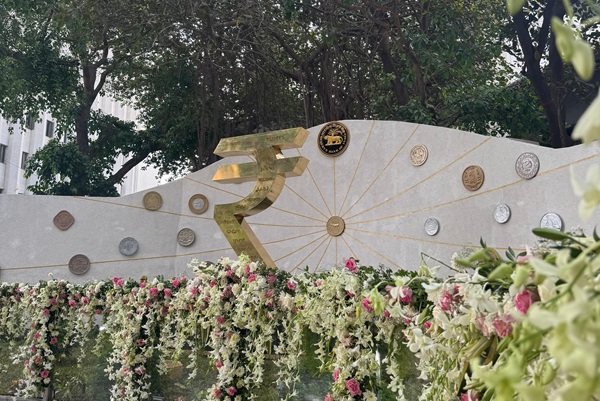.png)

Babuji K is a career central banker with 35 years at RBI in exchange rate management, reserve operations, supervision, and training.
September 21, 2025 at 5:32 AM IST
India’s non-resident citizens have long sustained the country with more than emotional ties. Their remittances have become the world’s single largest flow of diaspora capital, hitting a record $135.46 billion in 2024-25. These transfers have helped bridge India’s trade gap, supported household consumption, and provided a buffer against volatile capital markets.
Yet new policy shifts in the US, where a significant share of these flows originate, are placing pressure on what has been one of India’s most reliable external financing channels. The combination of a new remittance tax and a dramatic rise in visa fees for skilled workers threatens not only short-term inflows but also the longer-term remittance trajectory.
For more than two decades, India’s remittance story has been one of resilience. From the modest $20 billion –$25 billion received in the late 1990s, inflows have expanded consistently. Even during the COVID-19 disruptions, when global migration slowed and labour markets buckled, inflows held steady at $87 billion in 2020-21. Recovery in the Gulf and higher wages in host countries pushed them to $110 billion–$111 billion by 2022-23. They reached $129 billion in 2023-24 before topping out at the current peak. This uninterrupted climb reflects both the breadth of India’s diaspora and a structural shift towards higher-skilled migration.
Balance Anchor
Unlike foreign institutional flows that reverse during bouts of global uncertainty, remittances tend to move countercyclically, often increasing in times of domestic distress as migrants send more to families back home.
This quality enhances India’s creditworthiness and gives the Reserve Bank of India more space in its currency management strategy.
What makes today’s remittance inflows distinct from earlier cycles is the shift in geography and quality. The US now contributes close to 28% of India’s total inflows, up from 23% just four years ago. The United Kingdom’s share has risen too, as Indian professionals spread across finance, technology, and healthcare. The Gulf remains an important corridor, but the demographic profile has changed. Where once the bulk of flows came from blue-collar workers in construction and services, a growing portion now reflects skilled employment in healthcare, education, and emerging services. Additional diversification from Singapore, Southeast Asia, and European countries has further reduced concentration risk.
This dispersion matters.
A remittance base overly reliant on Gulf oil cycles or single-country dynamics would expose India to sharper shocks. Today’s diversification, both in geography and in skills, has offered resilience. Yet this does not fully insulate India from policy shifts in advanced economies.
Policy Shocks
While lower than the initially proposed 3.5%, the levy still represents a meaningful drag.
On today’s volumes, the tax is worth $1.35 billion annually. A modest behavioural shift, say a 2% drop in flows, would wipe out twice that amount. A deeper adjustment could cost India over $13 billion. Whether senders absorb the cost, pass it to recipients, or resort to informal channels will determine the severity of the hit.
A second and potentially more consequential shock arrived this month with the announcement that H-1B visa fees would increase fifty-fold, to $100,000 per application. This effectively transforms the economics of skilled migration to the US. While some large technology firms may absorb the cost for critical roles, the broader flow of Indian professionals is likely to slow. Since these workers form the backbone of higher-value remittances, the long-term impact could be more damaging than the immediate tax.
At the household level, the importance of remittances cannot be overstated.
They fund education, healthcare, housing, and small business investments. States such as Kerala, Punjab, Andhra Pradesh, Uttar Pradesh, and Bihar rely heavily on these inflows, with Kerala historically receiving transfers equivalent to more than a quarter of state income. Formalisation through banks and fintech platforms has reduced the reliance on hawala channels, improved transparency, and expanded financial inclusion. Yet if volumes decline meaningfully, the social and developmental consequences could be severe.
Macro drivers have also played a role in shaping flows. The rupee’s depreciation from ₹60–65 per dollar in the mid-2010s to around ₹85–88 today has made each dollar sent home more valuable in rupee terms. This currency dynamic has provided a powerful incentive for remitters. At the same time, domestic deposit rates, with the repo at 6.5%, have made non-resident deposits attractive as investment instruments. These conditions mean that remittances are not purely altruistic transfers; they also reflect rational portfolio decisions shaped by relative returns.
Looking ahead, the consensus remains that India will continue to dominate global remittances, with annual inflows projected between $120 billion–$135 billion in the near term. The diaspora’s emotional connection to the homeland, the ongoing global demand for skilled labour, and the ease of digital transfer systems all provide a foundation for continued resilience. Yet risks are growing. Policy volatility in host countries, automation and artificial intelligence reducing demand for certain professional skills, and exchange-rate uncertainties all threaten to erode this stability.
For policymakers, the challenge is to treat remittances as valuable but not guaranteed. They must be productively leveraged through innovative diaspora bonds, tailored deposit schemes, and financial instruments that encourage longer-term commitments. At the same time, diplomatic engagement with host countries should be intensified to mitigate the adverse effects of policy shifts.
The broader lesson is one of balance. Remittances cannot remain a substitute for structural reforms or sustainable export competitiveness. They are a powerful stabiliser but also a potential crutch. If over-relied upon, India risks complacency in addressing its external vulnerabilities. The correct policy approach is to harness these flows while simultaneously building alternative buffers.
The strength of India’s external position has long rested on the invisible transfers of its global citizens. As new strains emerge, the nation must adapt quickly. By diversifying income sources, strengthening domestic capital markets, and creating better pathways for migrant engagement, India can ensure that the world’s most generous diaspora continues to anchor its economy, even as global policy winds shift.




